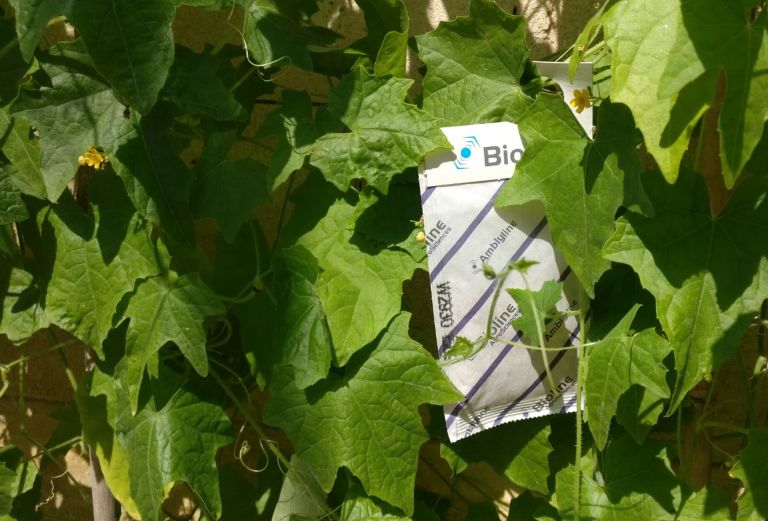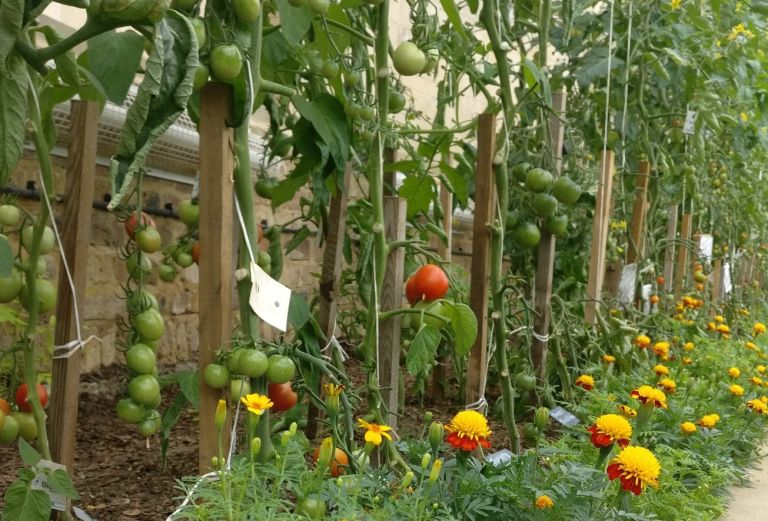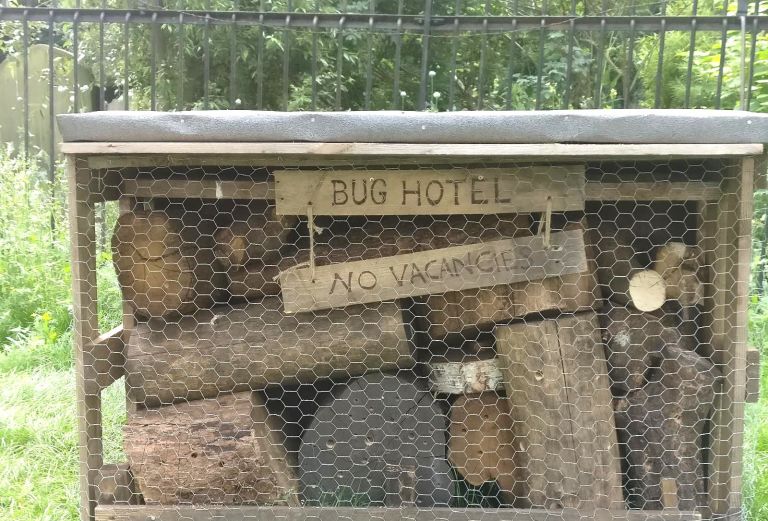
By Elizabeth Bredin, garden and front of house volunteer
Almost everyone enjoys receiving a package in the post. I think it might stem from the child-like thrill of anticipation about what is inside. One Thursday this summer when boxes were delivered to the gardeners’ bothies, we garden volunteers watched with curiosity as head gardener Lucy Hart cut open several small cardboard cartons. Cossetted inside was an unusual and precious cargo – predators which we use to control pests in the glasshouses.
At Fulham our lovely plants are selected not only for their historical appropriateness, but also for disease resistance and suitability for environmental controls. We eschew the use of chemicals in the glasshouses and instead use biological controls. We work with a biological control producer which gives us a prediction of the pests which will target our plants over the year. They then devise a program to keep those pests at bay, using predators to attack them before the pests emerge. The result is delivered by post on a 12-month cycle, in boxes kept cool in “blue ice” blocks. The enclosed predatory pests must be distributed in the glasshouses as soon as they arrive.

In the July shipment, we received three predators. Encarline is a parasite of the white fly which sucks sap from plants; it was first successfully used in commercial crop management in 1926. It’s a small parasitic wasp which arrives as a tiny black scale, from which adults emerge a few days later. Amblysies californicus is a tiny (1.25mm) predatory mite which feeds on spider mites (which in turn feed on the sap in our plants). Lucy’s favourite is Aphidius colemani, whose reproductive life cycle sounds like something from a sci-fi film. A. colemani lays its eggs in its unsuspecting prey – aphids – without the aphids even knowing they’ve been “colonised”. Upon hatching, the infant A. colemani eat their hosts from the inside out. What a way to go…!
Although they’re extremely effective and prove deadly to our pesky pests, all of the predators are completely harmless to humans (as the old maxim goes, they’re much more scared of us!).

This summer in the vinery we’re growing more than 18 varieties of tomatoes, delicately favoured cucumbers and dozens of seedlings until they’re ready to be planted out throughout the gardens at Fulham. These plants are protected from insect and arachnid pests by these biological controls which means we can grow these crops organically. You may have noticed small paper sachets hung in the vinery from the ceiling, netting, window sashes and even the plants themselves. Although they may look somewhat like tea bags, these sachets are the containers for the biological predators and are replaced every few weeks. See if you can spot any of the predators – they’re so small they’re almost impossible to see with the naked eye.

Venture out into the garden to find another of our biological controls—a very luxurious bug hotel, built by garden volunteer Chris Warner. Chris designed and built the hotel entirely out of scrap materials which he found on site. The hotel provides a habitat for lone bees, masonry bees, woodlice and spiders as well as birds. It’s located adjacent to the All Saint’s Church fence.
There are so many ways which a home gardener can avoid using pesticides and chemicals. Try a bug hotel to attract beneficial insects and arachnids to your garden. You can purchase ladybird larvae online, as well as many of the predators which we use here at Fulham. Companion planting is an effective and attractive way to discourage unwanted garden pests. We all can have a part to play in maintaining and improving the health of our natural environment.